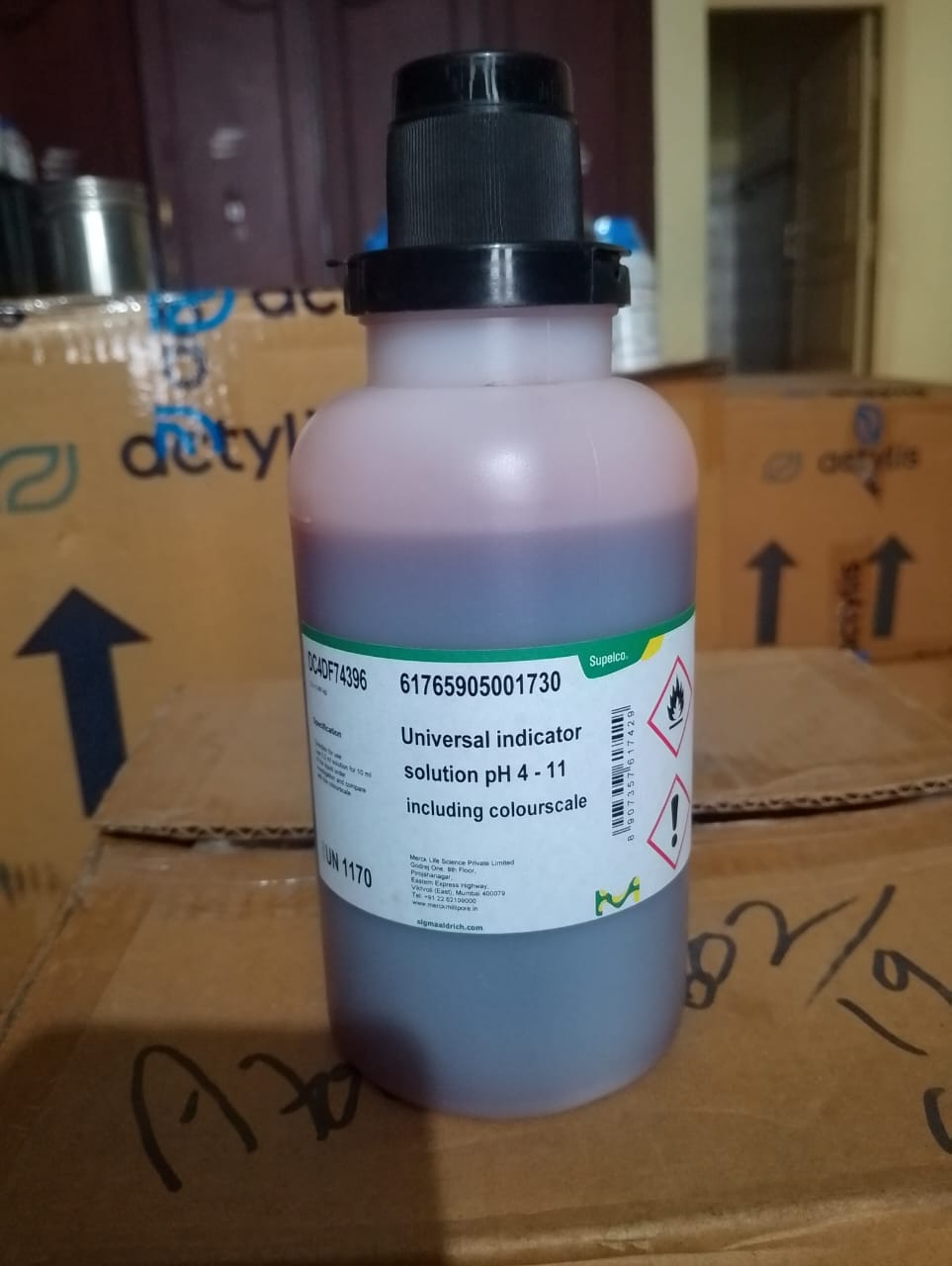
2024-09-28T09:34:23
A universal indicator is a pH indicator made of a solution of several compounds that exhibit various smooth colour changes over a wide range pH values to indicate the acidity or alkalinity of solutions. A universal indicator can be in paper form or present in a form of a solution.[1] History[edit] Although there are several commercially available universal pH indicators, most are a variation of a formula patented by Yamada in 1933.[2][3][4] Composition[edit] A universal indicator is usually composed of water, 1-propanol, phenolphthalein, sodium hydroxide, methyl red, bromothymol blue, sodium bisulfite, and thymol blue.[5] The colours that indicate the pH of a solution, after adding a universal indicator, are: pH range Description Colour ≤ 3 Strong acid Red 4–6 Weak acid Orange or Yellow 7 Neutral Green 8–10 Weak alkali Blue ≥ 11 Strong alkali Indigo or Violet The colors from yellow to red indicate an acidic solution, colours blue to violet indicate an alkaline solution and a green colour indicates that a solution is neutral. Universal indicator components Indicator Low pH colour Transition pH range High pH colour Thymol blue (first transition) Red 1.2 – 2.8 Yellow Methyl orange Red 3.2 – 4.4 Yellow Methyl red Red 4.8 – 6.0 Yellow Bromothymol blue Yellow 6.0 – 7.6 Blue Thymol blue (second transition) Yellow 8.0 – 9.6 Blue Phenolphthalein Colourless 8.3 – 10.0 Fuchsia Wide-range pH test papers with distinct colours for each pH from 1 to 14 are also available. Colour matching charts are supplied with the specific test strips purchased.

Have a question? Ask here!
Required fields are marked *